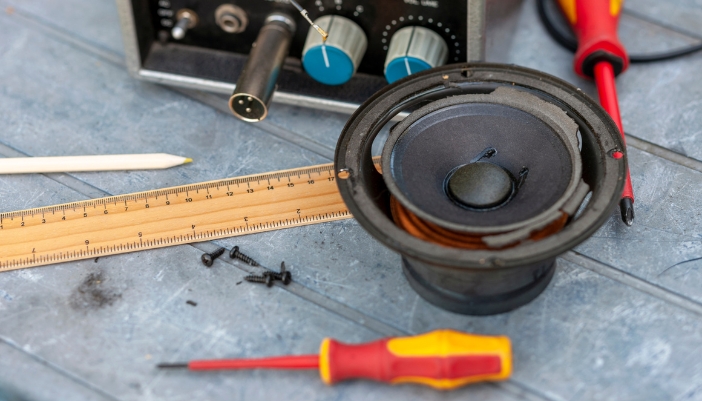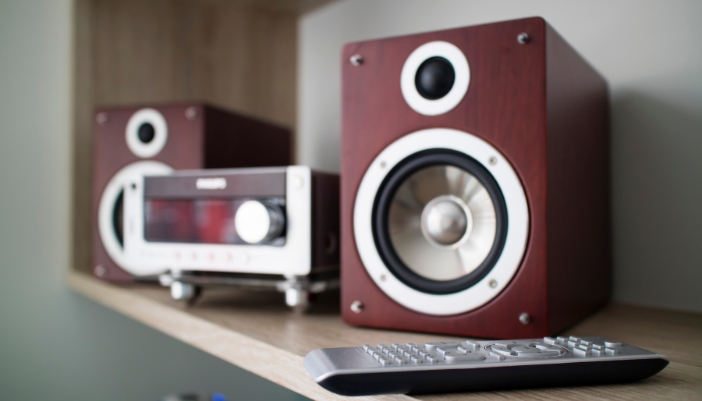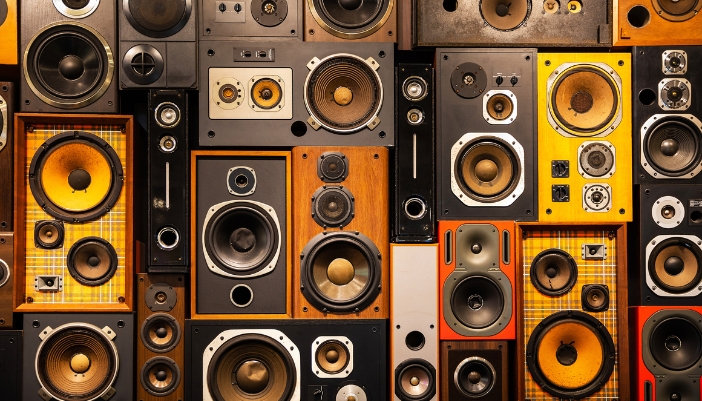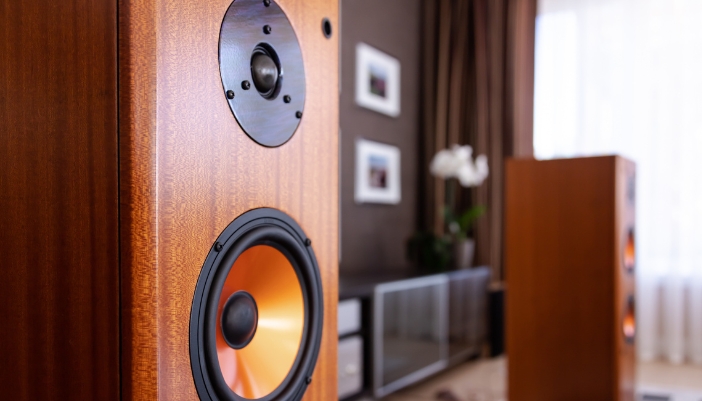Listening to music can transcend you to a new world filled with powerful emotions and imagery. And, at the heart of every beat, melody, and dropped bass is a speaker! These transducers transform electrical energy into mechanical energy, moving air to create the sound waves that reach our ears — aka, music!
But what lies beneath the surface of these incredible sound machines? A lot more than you think! Even the smallest speakers contain several components to produce the sound we love, and each one is essential!
Let’s learn more about a speaker's anatomy and its effect on your sound!
Basket (Frame)

The first part of any speaker is the basket, or frame, which is the skeleton of the speaker that holds everything together. And it serves a couple of essential functions:
- Structural Support: The basket provides the physical structure that holds the speaker's components in place, like the magnet, voice coil, and other essentials.
- Vibration Resistance: Excessive vibrations can lead to sound distortion, so the basket's rigidity is crucial in maintaining the integrity of the sound output. By resisting vibrations, it ensures that the sound produced by the movement of the cone is clean and undistorted.
- Durability: A well-built basket ensures the speaker can withstand the physical stresses of regular use, including the constant movement of the cone and the impact of sound waves, without degrading over time.
Magnet and Voice Coil
Speakers turn electrical signals into the sound we hear, and two essential parts make this possible: the magnet and the voice coil. Without these components, there’d be no way to create an electromagnetic field that is essential for all speaker’s operation!
- The magnet provides a constant magnetic field, which is crucial for the voice coil to work.
- The voice coil, energized by electrical signals (music), interacts with this field, moving back and forth to push the speaker's cone, moving the air to create sound.
- Together, they convert electrical energy into audible sound!
Cone/Diaphragm

At the core of every speaker's ability to fill the room with music is the cone, also known as the diaphragm. This part of the speaker pushes the air together to create sound waves. But the material of it can greatly influence the warmth, clarity, and precision!
- Paper produces a warm, natural sound and is a classic choice but it isn’t very durable.
- Plastic offers clarity on a budget, but it might not create the full depth and richness of complex audio tracks.
- Metal delivers clear and precise high frequencies while adding the crispness that audiophiles love!
- Composite materials like carbon fiber blend durability with warmth to create a balanced sound quality.
Surround
The surround is the speaker component that might not catch your eye, but it's fundamental to sound production. The flexible ring ensures the cone moves precisely, connecting it seamlessly to the speaker's frame and maintaining alignment — it’s basically the cone’s support system!
It enables the cone to vibrate and move freely, crucial for producing sound waves!
Note:
The material of the surround affects both its longevity and the sound quality, as the more durable ones ensure consistently good quality over time.
Spider
Beneath the cone lies the spider – a component that might not get much limelight but is essential for maintaining the alignment of the voice coil and cone. The spider absorbs movements, ensuring the cone moves consistently and is controlled. This helps to stabilize the sound output, preventing distortion and ensuring your music always sounds its best!
Crossover Circuit
In speakers that use multiple drivers to deliver different sound ranges (like bass, midrange, and treble), the crossover circuit plays a crucial role. It directs the right frequencies to the appropriate driver, such as low frequencies to the woofer and high frequencies to the tweeter. This ensures that each part of your music is handled by the component best suited to reproduce it, resulting in a balanced and harmonious sound output.
Drivers

In speakers, different drivers cater to specific sound frequencies, shaping the audio experience:
- Tweeters handle the highest frequencies in music, such as the sharp notes of a violin or the clarity of a cymbal crash.
- Mid-Range Drivers target the middle frequencies, like the human voice, guitars, and pianos.
- Woofers handle lower frequencies, like the mid-lows and deep bass tones, so you can hear things like a bass guitar and drumbeats.
- Subwoofers produce the deepest bass you can feel as much as hear; they add that extra punch people crave.
Speaker Cabinets

A speaker's cabinet, or enclosure, isn't just about aesthetics; it's a pivotal element in sound quality. It seals and supports all internal components, including drivers, and is critical in managing sound waves. A proper cabinet design ensures only the sound from the front of the drivers reaches your ears while enhancing bass frequencies for a richer, fuller sound.
And they help minimize vibration, too!
What’s Your Sound Made Of?
As you can see, each part of a speaker is a necessary part to create the sound you love. However, even with all these components, not every speaker is created equal — they all come with different advantages! So, if you’re ready to upgrade your speaker equipment, contact our experts at Nawara Brothers Home Store, and we’ll help you find the best speakers for your sound!